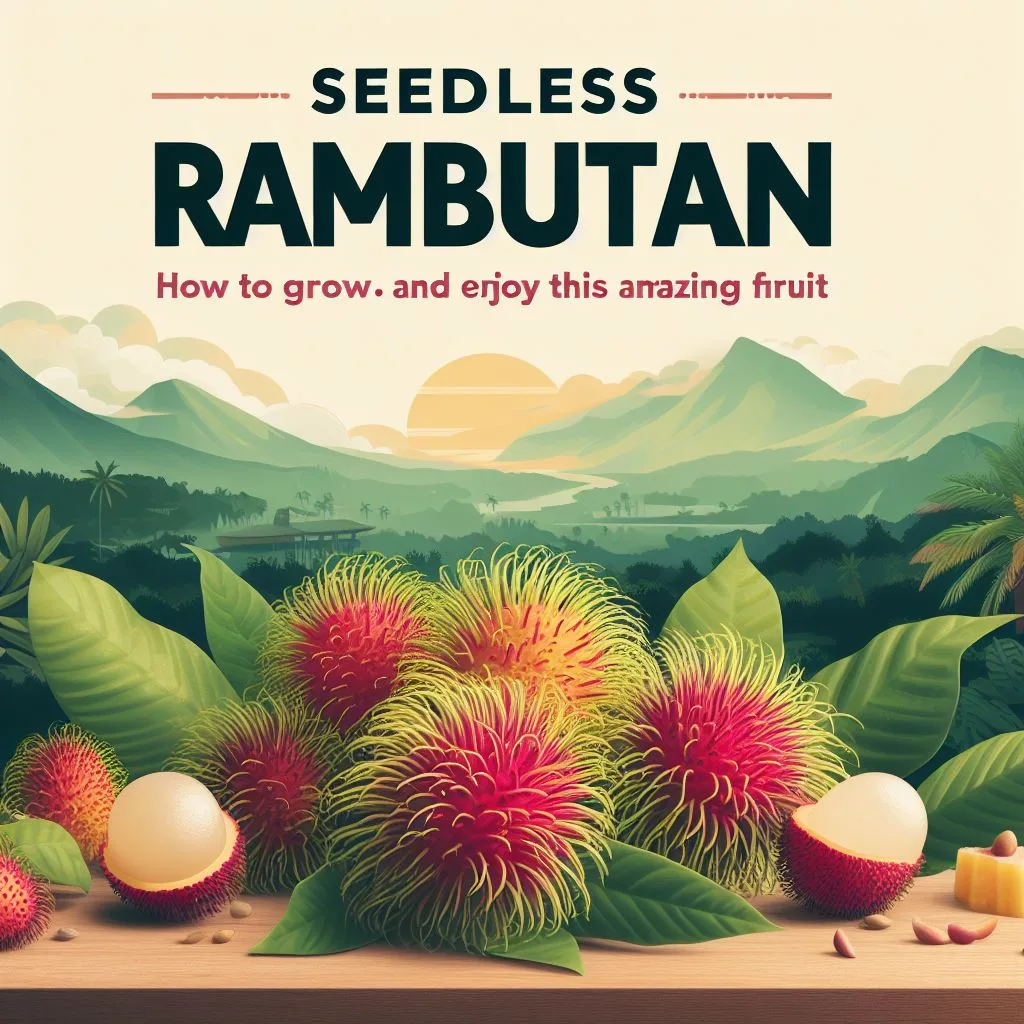
Rambutan, a tropical fruit native to Southeast Asia, has long been cherished for its juicy flesh and unique appearance. Traditionally, rambutan fruit is known for its vibrant red skin adorned with soft, hair-like spines. However, a recent breakthrough in cultivation techniques has led to the development of seedless rambutan, revolutionizing the fruit industry. This article delves into the world of seedless rambutan, exploring its origins, cultivation process, benefits, impact on the fruit industry, consumer preferences, and culinary uses.
The Traditional Rambutan Fruit
Before we embark on the journey of seedless rambutan, it is essential to understand the characteristics of the traditional rambutan fruit. Rambutan, scientifically known as Nephelium lappaceum, belongs to the Sapindaceae family. It is a small to medium-sized fruit, typically measuring around 3-6 centimeters in diameter. The fruit’s exterior is covered in soft, hairy spines, which give it a distinct appearance. When ripe, the spines turn from green to vibrant red, enticing consumers with its allure. Inside, the rambutan fruit boasts a translucent, juicy flesh that is sweet and slightly acidic, offering a delightful tropical flavor.
What Makes SeedlessRambutan Special?
The emergence of seedless rambutan has sparked a considerable buzz in the fruit industry. Unlike its traditional counterpart, seedless rambutan bears fruit without any seeds, making it an absolute game-changer. This development has been achieved through extensive research and selective breeding techniques. By cross-pollinating rambutan trees with specific traits, scientists have successfully cultivated seedless varieties. The absence of seeds not only enhances the eating experience by eliminating the need for spitting or picking out seeds but also facilitates commercial production and consumption of the fruit.
The Cultivation Process of SeedlessRambutan
Cultivating it requires a meticulous and dedicated approach. The cultivation process begins with selecting the right parent trees that exhibit desired characteristics such as seedlessness, taste, and appearance. These trees are then carefully cross-pollinated to create offspring with the desired traits. The resulting seedlings are nurtured in controlled environments until they are ready for transplantation. Once transplanted, the seedlings are meticulously cared for, ensuring optimal growth conditions through proper irrigation, fertilization, and pest management. After several years, the trees bear fruit, and the seedless rambutan harvest begins.
Benefits and Advantages of SeedlessRambutan
The seedless rambutan offers a range of benefits and advantages over its traditional counterpart. Firstly, the absence of seeds makes it more convenient for consumption, eliminating the need for spitting or peeling seeds while savoring the fruit. This makes it an ideal choice for snacking, especially for children and individuals who prefer a fuss-free eating experience. Additionally, it allows for easier processing and packaging, making it a viable option for the food industry. The fruit’s seedlessness also ensures consistent quality and taste, as the absence of seeds eliminates the risk of bitterness or variations in flavor.
The Impact of SeedlessRambutan on the Fruit Industry
The introduction of seedless rambutan has had a significant impact on the fruit industry. This innovative variety has opened up new avenues for commercial cultivation and export. Seedless rambutan’s unique selling point of convenience and consistent quality has garnered attention from consumers, leading to increased demand. Farmers and growers have also benefited from the shift towards seedless rambutan, as it allows for higher yields and improved profitability. Furthermore, the introduction of seedless rambutan has created a buzz in the market, attracting consumers who were previously unfamiliar with this tropical fruit.
Consumer Preferences and Demand for SeedlessRambutan
Consumer preferences have played a pivotal role in driving the demand for it. The convenience factor, coupled with the fruit’s consistent taste and quality, has made seedless rambutan a favorite among consumers. Furthermore, the absence of seeds makes it an attractive option for those who may have been hesitant to try the traditional variety. The demand for it has not only been observed in local markets but also in international markets, where consumers are increasingly seeking out unique and exotic fruits. The growing popularity of it has led to its availability in supermarkets and specialty stores worldwide.
SeedlessRambutan in International Markets
The entry of seedless rambutan into international markets has opened up doors for growers and exporters. The unique characteristics of this variety, combined with its exotic appeal, have made it a sought-after fruit in countries outside of its native region. It has found its way into various international cuisines, adding a touch of tropical sweetness to dishes and desserts. The fruit’s vibrant red color and juicy flesh make it an enticing ingredient for chefs and home cooks alike. Moreover, the availability of seedless rambutan in international markets has helped promote cultural exchange and appreciation for tropical fruits.
SeedlessRambutan Recipes and Culinary Uses
The culinary versatility of seedless rambutan extends beyond mere consumption as a fresh fruit. Creative chefs and home cooks have discovered innovative ways to incorporate it into various recipes and culinary creations. The fruit’s juicy flesh and tropical flavor make it an excellent addition to salads, smoothies, cocktails, and desserts. Its vibrant appearance also adds a visually pleasing element to culinary presentations. From exotic fruit salads to refreshing tropical beverages, seedless rambutan offers a range of possibilities for culinary exploration.
Conclusion: The Future of Seedless Rambutan in the Fruit Industry
As we conclude our exploration of seedless rambutan, it is evident that this innovative variety has the potential to shape the future of the fruit industry. Its convenience, consistent quality, and unique characteristics have captured the attention of consumers and industry professionals alike. The demand for seedless rambutan continues to grow, both locally and internationally, paving the way for increased cultivation and export. With its culinary versatility and exotic appeal, seedless rambutan is poised to become a staple in the fruit industry, offering a tantalizing taste of the tropics to consumers around the globe.
CTA: Experience the convenience and exotic appeal of seedless rambutan for yourself. Try this game-changing fruit today and discover a new level of enjoyment in your snacking and culinary adventures.






